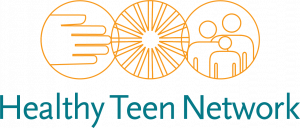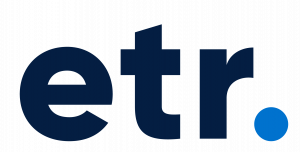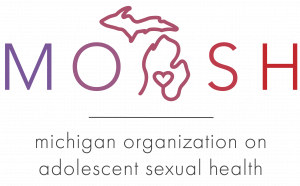Puberty is a time of physical, emotional, and social changes that can cause some young people great angst. Equipping students with the knowledge and skills about these changes can help them navigate through this challenging time and emerge strong, happy, and healthy. This workshop will provide you with a number of lessons to teach students about the changes of puberty, and will help you improve your skills on addressing this sensitive topic in an inclusive way. This workshop can be tailored to meet the specific needs of your group, school, or agency. All content is aligned with the National Sexuality Education Standards, the National Teacher Preparation Standards for Sexuality Education, and the Professional Learning Standards for Sex Education.
Training Hub
The Sex Education Collaborative Training Hub lists trainings for sex educators, facilitators, and other professionals on best practices for sharing important information with clients and the public. From teaching anatomy inclusively to effectively addressing bias in the classroom to addressing racial justice and equity in sex education, the Training Hub includes trainings, technical assistance, and policy support from state, regional, and national leaders in the field of sex education.
Please note: The Training Hub includes both in-person and online professional trainings. If you see a training you are interested in and it isn’t listed as virtual, please reach out directly to any of our members to find out what's possible!
Trainings Offered by State-Based and National Organizations
Displaying results 61 - 65 of 137Puberty 101: Teaching about the Birds and the Bees
- Indicator 2 (K-12): Demonstrate three student-centered instructional approaches that support a variety of learning styles. (S)
- Indicator 2 (K-12): List three physical, three social, and three emotional changes that occur during puberty.
- Indicator 3 (K-12): Identify three practices that students can adopt for maintaining healthy habits beginning during puberty.
Human Trafficking 101
This is the first in a series of eLearning units focused on human trafficking. Subsequent units include content specifically for medical providers, educators, parents, caregivers, faith-based professionals, and other youth-serving professionals to better understand the role they can take in addressing sex and labor trafficking. Via an interactive, self-paced unit, participants will explore critical elements of sex and labor trafficking and steps they can take to support victims and survivors in your community. This unit promotes learning though stories, activities, and short quizzes.
Through Healthy Teen Network’s partnership with the University of Maryland School of Social Work’s Prevention of Adolescent Risk Initiative, we are pleased to share resources on human trafficking. Although these resources are focused on specifics for the state of Maryland, anyone from any state can learn about human trafficking as well.
At EyesOpenIowa, we specialize in helping educators, schools, and organizations deliver accurate, inclusive, and policy-aligned sexual health education. With decades of experience, our dedicated training and leadership teams work closely with you to develop a customized plan that meets your specific needs. Here's how we can support you:
Curriculum Alignment to Policies and Standards We ensure your curriculum is fully aligned with state and federal policies, as well as the latest educational standards, so your program is compliant and impactful.
Curriculum Development We collaborate with you to create a robust, tailored curriculum that incorporates the latest research and best practices, ensuring it is both effective and engaging.
Curriculum Review for Cultural and LGBTQ Inclusivity Our team assesses your content for cultural relevance and LGBTQ inclusivity, providing recommendations that foster an environment of respect and understanding for all students.
Curriculum Review for Medical Accuracy We verify the medical accuracy of your curriculum, ensuring all health-related content is up-to-date and evidence-based, promoting healthy decision-making.
Scope and Sequence Development and Review We help you develop or refine your scope and sequence to ensure learning objectives are met in a logical, structured manner, maximizing educational impact.
Partner with EyesOpenIowa to elevate your curriculum with customized, expert support, ensuring it is comprehensive, inclusive, and meets the highest standards of educational excellence.
Affirmative Consent
Cultural perspectives, organizational policies, and local and national laws are changing to embrace the principle of Affirmative Consent. A culture of consent is one in which it is the norm, not the exception, for all persons to obtain consent prior to sexual experiences. Many educators feel this policy shift is a step in the right direction and has the potential to create positive change.
Affirmative Consent policies can:
- Build communication skills
- Construct a respectful frame about personal choice
- Help prevent sexual assault
- Address negative, outdated gender roles
Objectives of this training:
- Explain how Affirmative Consent contributes to changing youth norms and attitudes around sexual relationships.
- Deliver a pitch to advocate for the inclusion of Affirmative Consent content in educational settings.
- Develop strategies for addressing youth criticism of Affirmative Consent.
- Describe the key messages, critical talking points, and different activities included in the Teaching Affirmative Consent supplement's lesson plan.
- Describe at least three ways to reinforce Affirmative Consent messaging within related activities and classroom discussions.
- Indicator 2 (K-12): Demonstrate the ability to effectively respond to three different types of challenging questions. (S)
- Indicator 1 (K-12): Describe three health (e.g. physical, social and/or emotional) and/or academic benefits of sex education for young people
Virtual PD - Responding to Parents' Concerns about Sex Education
Virtual Professional Development is a simulated classroom where teachers can practice teaching student avatars using short scenarios and support from an instructional coach, so they can quickly learn and master the skills they most need to be effective. With upper elementary, middle and high school classrooms, Virtual PD has scenarios for teachers of all grade levels across a wide range of topics aligned with the Professional Learning Standards for Sex Education (PLSSE). You can watch the video here (link is external) to learn more about Virtual PD.
Using the Virtual Professional Development classroom simulator, the educator will practice Responding to a Parent's Concerns about Sex Education. In this scenario, the educator will have a meeting with a parent who has expressed concern about their child learning sex education. The scenario is adapted for upper elementary, middle or high school and includes parent concerns about puberty, teaching about condoms and sexual orientation. Educators will need to demonstrate effective strategies to address the parent's concerns.
- Indicator 1 (K-12): Describe three health (e.g. physical, social and/or emotional) and/or academic benefits of sex education for young people
- Indicator 2 (K-12): Describe state and/or district laws, policies, and standards that relate to sex education where one teaches.
Additional Trainings offered by out-of-state organizations
- ‹ previous
- 31 of 49
- next ›
Michigan Sex Education Policy and Law: Best Practices for Sex Education in Michigan
This training will walk participants through current Michigan law and policy as it relates to sex education in K-12 schools. We will review content requirements and spend time on Sex Education Advisory Boards (SEABs), the groups that set goals and objectives and review and recommend curriculum for their local school districts.
- Indicator 6 (6-12): Identify three federal and/or state laws that impact young peoples’ access to effective reproductive and sexual health care (e.g. age of consent for services, confidential access to health care services, and access to condoms)
- Indicator 1 (K-12): Demonstrate three techniques to create an inclusive and affirming learning environment. (S)
- Indicator 4 (K-12): Demonstrate three strategies of a trauma-informed approach to sex education (e.g. giving trigger warnings before content on sexual assault and allowing students the right to pass as appropriate, etc.). (S)
- Indicator 5 (K-12): Describe three effective strategies for practicing skills with students.
- Indicator 6 (K-12): Describe three strategies for actively involving parents, caregivers, and other trusted adults in a sex education program.
- Indicator 7 (K-12): Demonstrate the ability to analyze and tailor lesson plans to match the age, developmental stages, cultural backgrounds, and other identities of students. (S)
- Indicator 4 (K-12): Describe three strategies for incorporating the positive and negative impacts of communicating through technology into lessons on healthy relationships.
- Indicator 5 (K-12): Describe three ways to help students set and respect personal boundaries in relationships.
- Indicator 7 (6-12): Identify three medically accurate and youth-friendly resources for STD/STI and HIV prevention, testing, and treatment
- Indicator 6 (K-12): Explain three ways that LGBQ+ youth are at disproportionate risk for health disparities.
- Indicator 7 (K-12): Identify three credible, medically accurate, youth-friendly resources that can provide information or support related to sexual orientation.
- Indicator 8 (K-12): Explain why it is essential to include positive portrayals of LGBQ+ people in lessons.
- Indicator 9 (K-12): Demonstrate three strategies that can be used to include positive portrayals of LGBQ+ people in lessons. (S)
- Indicator 2 (K-12): Name three sexual health inequities and some of their systemic causes (e.g., African American women living with HIV have expressed mistrust toward healthcare professionals, in part, as a result of systemic racism).
- Indicator 3 (K-12): Describe three ways power, privilege, prejudice, discrimination, and stereotypes related to age, race, ethnicity, sexual orientation, gender, gender identity, socio-economic status, immigration status, and/or physical or intellectual ability can impact sexual health and reproductive justice.
- Indicator 5 (K-12): Describe three strategies educators can use to acknowledge and proactively work to mitigate the impact of bias on their students’ sexual health and multiple, intersecting identities.
- Indicator 1 (K-12): Describe three health (e.g. physical, social and/or emotional) and/or academic benefits of sex education for young people
- Indicator 2 (K-12): Describe state and/or district laws, policies, and standards that relate to sex education where one teaches.
- Indicator 9 (K-12): Demonstrate three strategies that can be used to make lessons affirming for transgender and gender expansive people. (S)
- Indicator 1 (K-12): Explain the differences between personal and universal values relating to sexuality.





